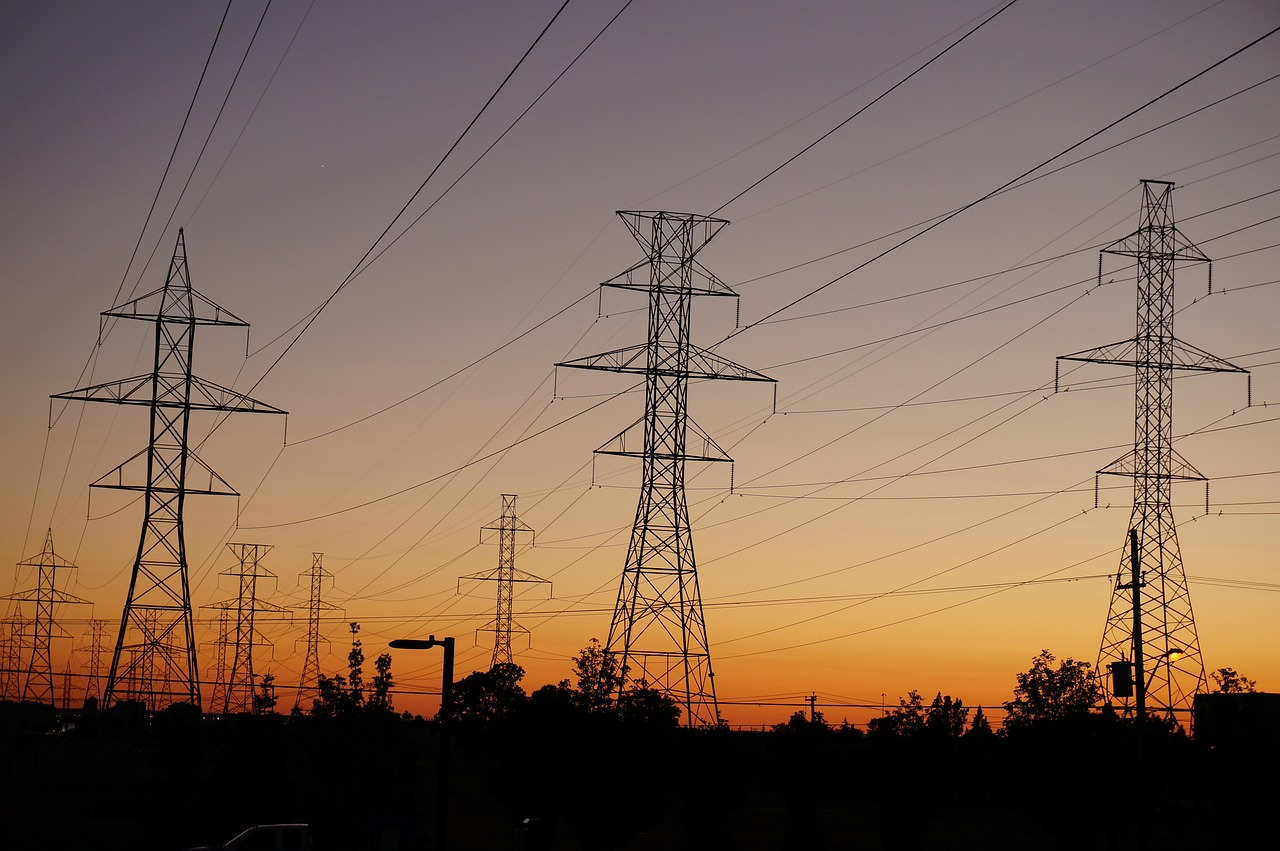Wildfires have a profound impact on both infrastructure systems and the communities they serve, highlighting the vulnerability of interconnected systems and the potential for system collapse. In this blog post, we will delve into the intricate relationship between wildfires and transmission lines, discuss the challenges they pose, and the implications for the affected communities. Additionally, we will explore how exci’s AI-powered early wildfire/bushfire detection technology can help to reduce the impact of fires on transmission lines significantly.
The Vulnerability of Transmission Lines
Transmission lines are the vital arteries of the electrical grid, carrying electricity over long distances from power plants to distribution networks. Unfortunately, these infrastructure lifelines are particularly susceptible to the destructive power of wildfires. The reasons for their vulnerability include:
a) Proximity to High-Risk Areas: Transmission lines often traverse through regions prone to wildfires, such as forests, grasslands, and mountainous terrain. Their geographical location alone makes them susceptible to ignition by a wayward spark.
b) Vegetation Interference: Trees, shrubs, and other vegetation near transmission lines can provide an easy pathway for fire to spread rapidly. During periods of dryness, these plants can become fuel for wildfires, leading to increased risks for transmission lines.
c) Overhead Design: Most transmission lines are designed to be overhead, exposed to the elements. While this design facilitates efficiency and cost-effectiveness, it also exposes them to potential damage from falling trees, burning debris, and the intense heat generated by wildfires.
The vulnerability of electricity networks to wildfires has been demonstrated on multiple occasions, such as the Canberra fires in 2003, Victorian fires in 2009, Blue Mountains fires in 2013, and the widespread fires in 2019-2020. During the 2019-2020 period, bushfires in Australia led to more than 280,000 customers experiencing power outages lasting from 1 to 10 days (Royal Commission on National Natural Disaster Arrangements 2020, p.229).
The Impact on Transmission Infrastructure
When wildfires encroach upon transmission lines, they can cause a range of detrimental effects, which ultimately disrupt the flow of electricity and impact the affected communities. Some notable consequences include:
a) Line Damage and Outages: The intense heat generated by wildfires can compromise the structural integrity of transmission lines, causing them to sag, warp, or even collapse. Furthermore, falling trees, burning debris, and the gusty winds accompanying wildfires can physically damage the transmission infrastructure, leading to extended power outages.
b) Power Supply Disruptions: When transmission lines are damaged or destroyed, the supply of electricity to communities can be severely disrupted. This disruption not only affects homes and businesses but also essential services such as hospitals, emergency response systems, and water treatment plants, exacerbating the overall impact on the affected communities.
c) Economic Consequences: Prolonged power outages resulting from wildfires can have significant economic repercussions. Businesses may be forced to shut down, leading to loss of revenue, layoffs, and long-term financial challenges. Additionally, the cost of repairing or replacing damaged transmission lines can place a heavy burden on utility companies and, in turn, consumers.
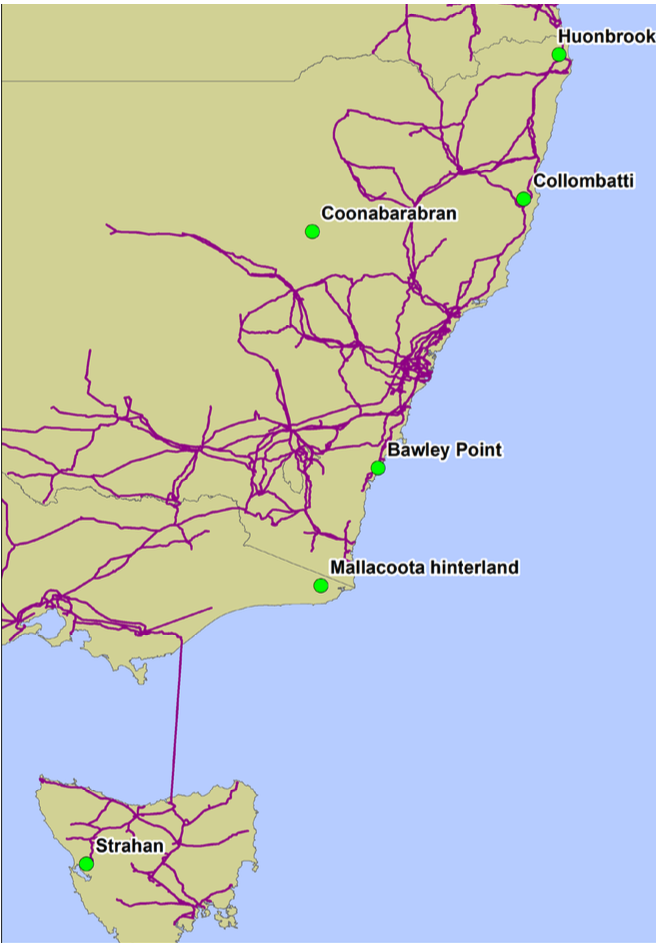
The above image shows six specific locations identified in a case study, where long distribution lines traversing through forested regions provide electricity to isolated towns that are susceptible to bushfires.
Community Implications and Challenges
Wildfires have far-reaching impacts that extend beyond their immediate vicinity, affecting interconnected infrastructure systems and potentially leading to a domino effect that undermines the overall resilience of communities. For instance, the loss of power due to damaged transmission lines directly impacts the communications sector, hindering communication and emergency response efforts. Moreover, the destruction of infrastructure has ripple effects on industries such as farming and tourism, compromising food security, timber production, and financial stability in sectors like insurance.
In situations where wildfires cause power lines to be destroyed, the reliability of a community’s electricity supply can be affected, often for extended periods of time. This is especially true when there is only one high-voltage distribution line supplying electricity to the community. The risk of damage from wildfires increases with the length of the distribution line. Consequently, communities and towns located at the end of these lines are more susceptible to being disconnected from the power grid during wildfire events.
The vulnerability of electricity networks on multiple occasions, such as the Canberra fires in 2003, Victorian fires in 2009, Blue Mountains fires in 2013, and the widespread fires in 2019-2020. During the 2019-2020 period, bushfires in Australia led to more than 280,000 customers experiencing power outages lasting from 1 to 10 days.
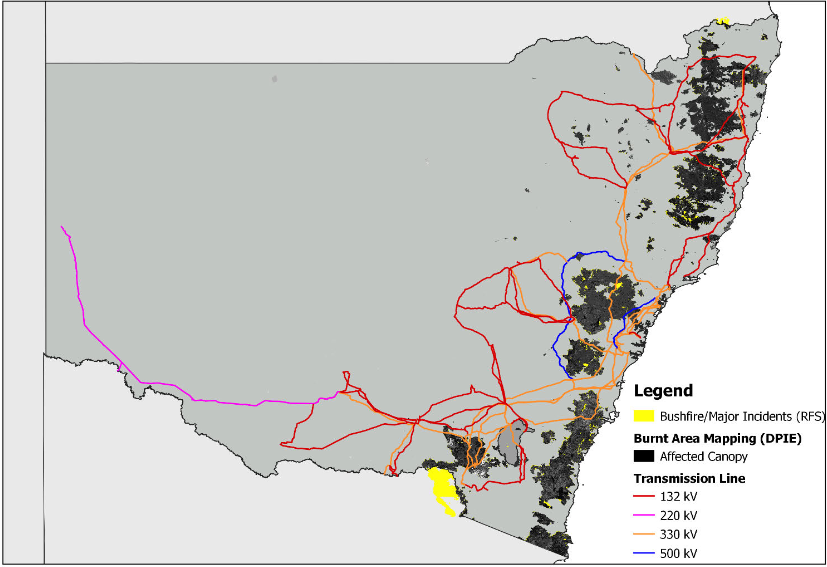
Map of 2019/20 bushfire burnt area with NSW and the TransGrid network (source: NSW Department of Planning, Industry, and Environment)
The power outages during the 2019-2020 bushfires in Australia had a profound and far-reaching effect on rural communities. Beyond the obvious challenges of not being able to refrigerate food or use air conditioning, the consequences extended to various other aspects of daily life. These outages resulted in the loss of mobile communications, creating a significant barrier to staying connected and informed. Moreover, disruptions in transportation compounded the difficulties faced by these communities.
The lack of electricity also had a cascading effect on essential services and utilities. It meant that people were unable to charge essential electronic devices such as phones or computers, hindering their ability to communicate and access important information. Furthermore, the inability to pump fuel posed significant challenges, restricting mobility and access to necessary resources. Importantly, the loss of power also meant that communities were unable to access drinking water for hydration, as well as water for basic hygiene, washing, and firefighting purposes.
Here are some key challenges faced by affected communities:
a) Public Safety Concerns: The threat of wildfires and their impact on transmission lines can jeopardise public safety. Evacuations become necessary to protect residents from the immediate danger of the fire, while power outages can hinder emergency response efforts and compromise communication systems.
b) Health Risks: Wildfires generate copious amounts of smoke and particulate matter that can harm human health. The resulting air pollution can exacerbate respiratory conditions, trigger allergies, and cause other health issues, especially for vulnerable populations such as children, the elderly, and individuals with pre-existing health conditions.
An unforeseen response to the Bushfires Royal Commission’s initiative to enhance the maintenance and quality of powerline infrastructure is the proactive practice of shutting down power distribution systems during extreme fire weather conditions. However, the consequences of enforced blackouts. During days of extreme bushfire danger, the accompanying high temperatures pose a significant public health risk. Heatwaves are a major cause of mortality, and with the effects of climate change, it is predicted that this mortality rate will sharply increase.
c) Disruption of Daily Life: Extended power outages disrupt daily life in numerous ways. Basic amenities such as lighting, refrigeration, heating, and cooling become unavailable, affecting food storage, comfort, and overall quality of life. Access to vital services, including healthcare, education, and transportation, may also be severely limited.
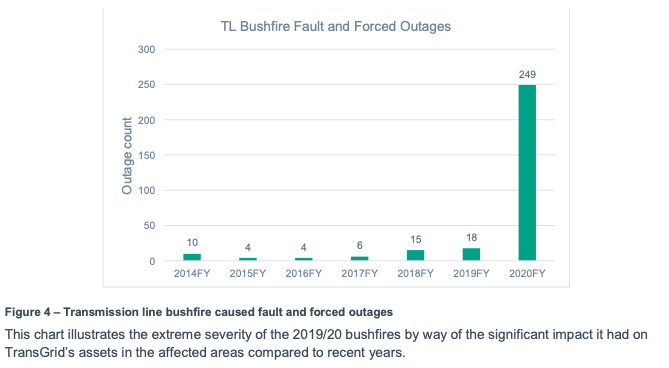
Underprepared Communities and the Challenge of Adaptation
Many communities find themselves ill-prepared to cope with the worsening bushfire threat. The scale and intensity of losses surpass their ability to adapt, leading to severe social, environmental, and economic consequences. This underscores the urgent need for comprehensive strategies that encompass early warning systems, rapid response procedures, and effective firefighting measures.
Importance of Local Early Warning Systems
Local early warning systems play a crucial role in community resilience play a crucial role in community resilience, facilitating rapid response and initial attack procedures by firefighting crews. By providing timely alerts and detection capabilities, communities are empowered to respond swiftly, enabling effective evacuation measures, resource mobilisation, and improved situational awareness.
exci’s Early Wildfire/Bushfire Detection Technology
exci’s AI-powered early wildfire detection and notification system is a powerful tool in mitigating fires’ social, environmental, and economic impact on electricity networks and the communities they serve. exci leverages advanced exci leverages advanced machine learning algorithms to analyse camera and satellite data for the presence of smoke and heat. Within minutes of ignition, the system can detect smoke indicating fire and issue early warnings to first responders, enabling prompt intervention and containment of wildfires.
By detecting fires in their early stages, the exci’s system acts as a crucial safeguard for transmission lines, preventing the situation from escalating and effectively mitigating the impact of fires. This proactive approach mitigates the risk of power outages in local communities.
Real-time Monitoring and Response
exci’s system also enables real-time monitoring of wildfire movements and behavior. By continuously tracking the progression of fires, utility companies and emergency responders can allocate resources more effectively and make informed decisions to protect transmission lines and prevent further damage. This proactive approach can significantly reduce downtime and minimise power disruptions for communities reliant on these transmission lines.
Collaborative Efforts
exci’s AI-powered early wildfire detection system can be integrated into existing emergency response frameworks, facilitating collaboration among stakeholders. Utility companies, fire departments, and government agencies can work together to develop comprehensive strategies that prioritise the protection of transmission lines and the communities they serve. This collaboration enhances overall preparedness and response, leading to more effective outcomes during wildfire events.
Preventing System Collapse
The time between ignition and first attack response is a key determinant of whether a fire evolves into a large and devastating event. Early detection of fires through exci’s system can prevent total system collapse by facilitating rapid response and containment efforts. This, in turn, improves the resilience of communities and reduces the overall impact on interconnected systems.
Strengthening Community Resilience
By providing real-time data and alerts, exci’s system enhances situational awareness and enables proactive decision-making by emergency management agencies. The early detection capabilities and efficient notification system empower communities to take necessary precautions, aiding in the preservation of life, property, and critical infrastructure.
|
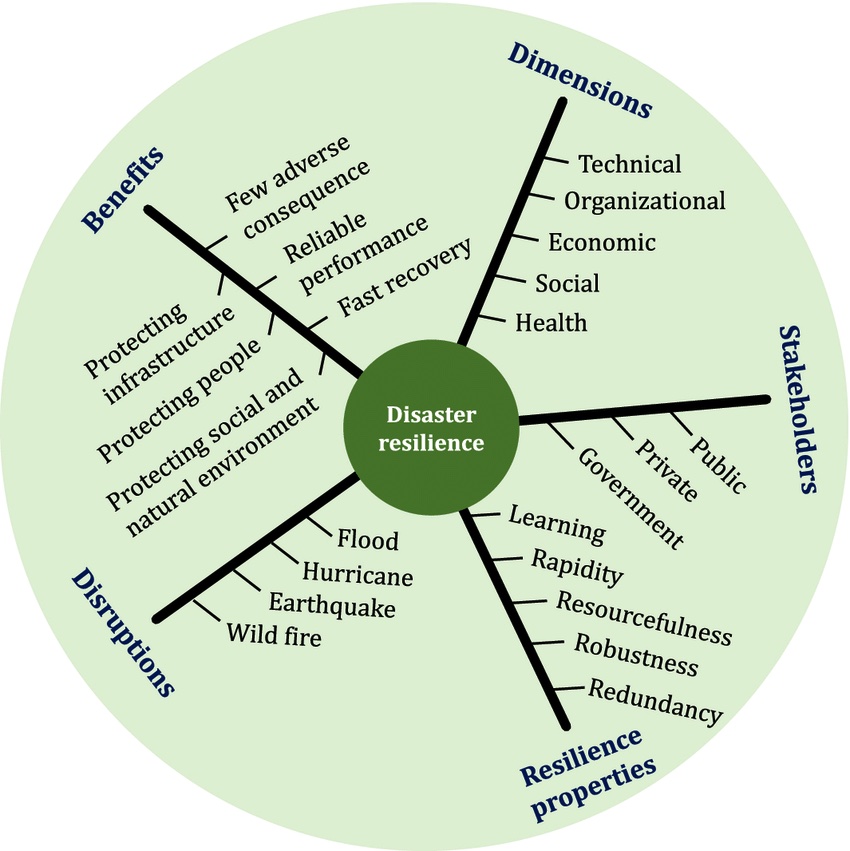 Features-of-disaster-resilience
Features-of-disaster-resilience
Conclusion
The impact of wildfires on transmission lines and communities is a complex issue that requires multifaceted approaches. While the vulnerability of transmission lines to wildfires poses significant challenges, exci’s innovative AI-powered early wildfire detection system offers a promising solution. By detecting fires in their early stages, facilitating real-time monitoring, and promoting collaborative efforts, this system can minimise the impact of fires on transmission lines and the communities that rely on them.
As we continue to battle the increasing threat of wildfires, integrating innovative technologies and fostering community engagement will be crucial in building resilience. By working together, we can mitigate the risk fires to transmission infrastructure, ensure the uninterrupted flow of electricity, and safeguard the well-being of the communities impacted by wildfires. exci’s AI-powered early wildfire detection system serves as a testament to the potential of technology in mitigating the devastating effects of wildfires on transmission lines and the communities they serve.
by Gabrielle Tylor
exci – The Smoke Alarm for the Bush
Don’t let hazardous events become catastrophic!
Contact our friendly team today for a comprehensive demonstration of exci’s system and discover how it can protect your assets while also protecting your community.
Australia:
Phone: 1300 903 940
International:
Phone: +61 458 594 554
Visit our website at https://www.exci.ai/ to learn more and take the first step towards a safer and more resilient future
